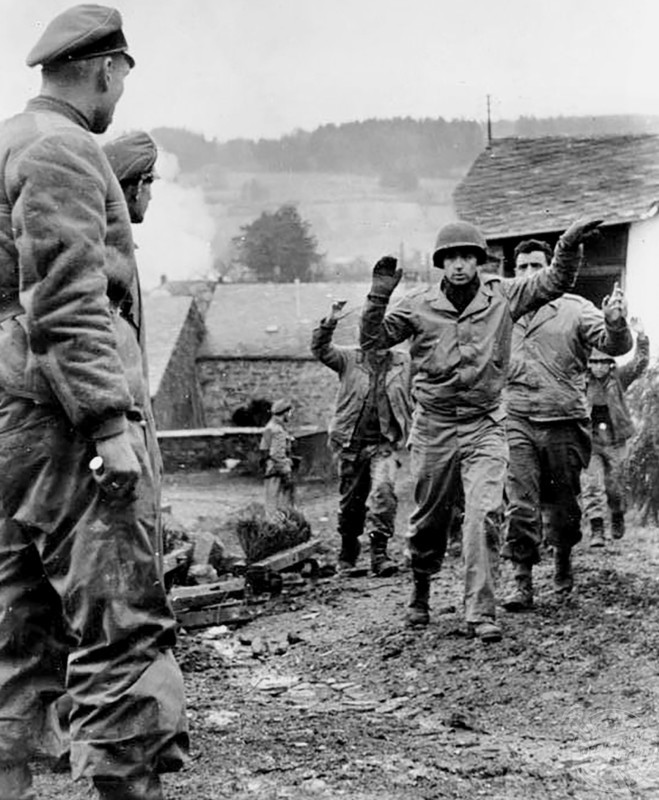
By Alex Jones
THE FULL horror facing allied soldiers in one of the bloodiest, iciest and mentally demanding battles of World War Two have been unveiled in a harrowing new book.
75 years ago, Allied forces – primarily American – were caught by surprise by an overwhelming Nazi counterattack in December 1944 in a battle devastatingly portrayed in the multi-award-winning 2001 TV epic Band of Brothers.
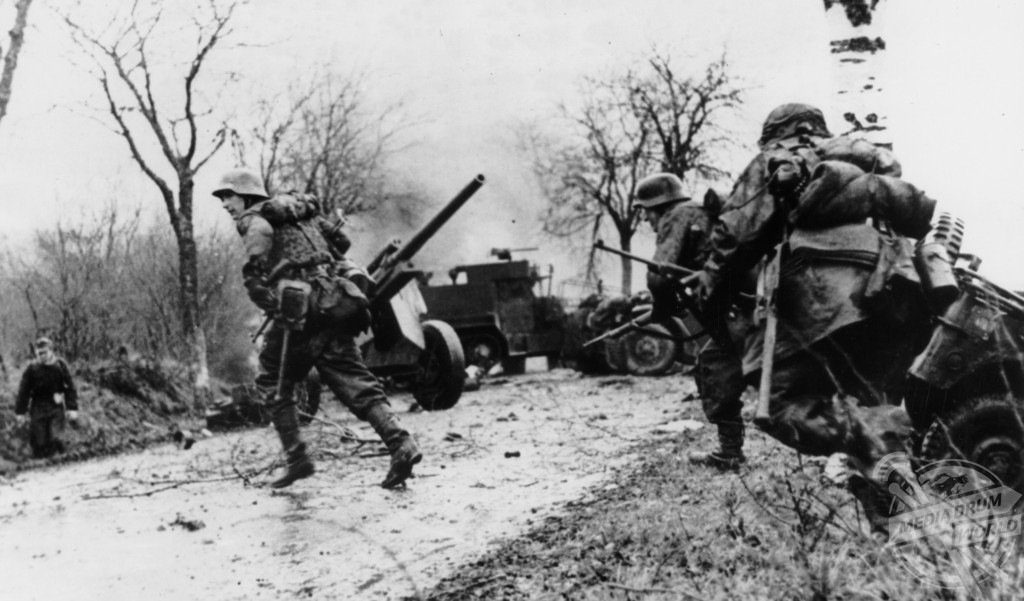
Heart-wrenchingly graphic photos show shivering US troops hunkering down in snow-laden fox holes in brutal wintry conditions, dead allied soldiers being looted for their boots and warm clothing by Nazi aggressors, and murdered American soldiers and Belgian civilians in a frozen field, hatefully slain by the German Army in an atrocious war crime.
Another remarkable shot shows the haunted faces of two captured German soldiers barely into their teenage years, and fierce allied soldiers facing down an assault in frozen Bastogne, famously one of the most punishing battlegrounds in the Second World War.
The incredible shots are included in Anthony Tucker-Jones’ devastating new book Armoured Warfare in the Battle of the Bulge, a gruesome and forthright account of the conflict Winston Churchill described as “undoubtedly the greatest American battle of the war”.
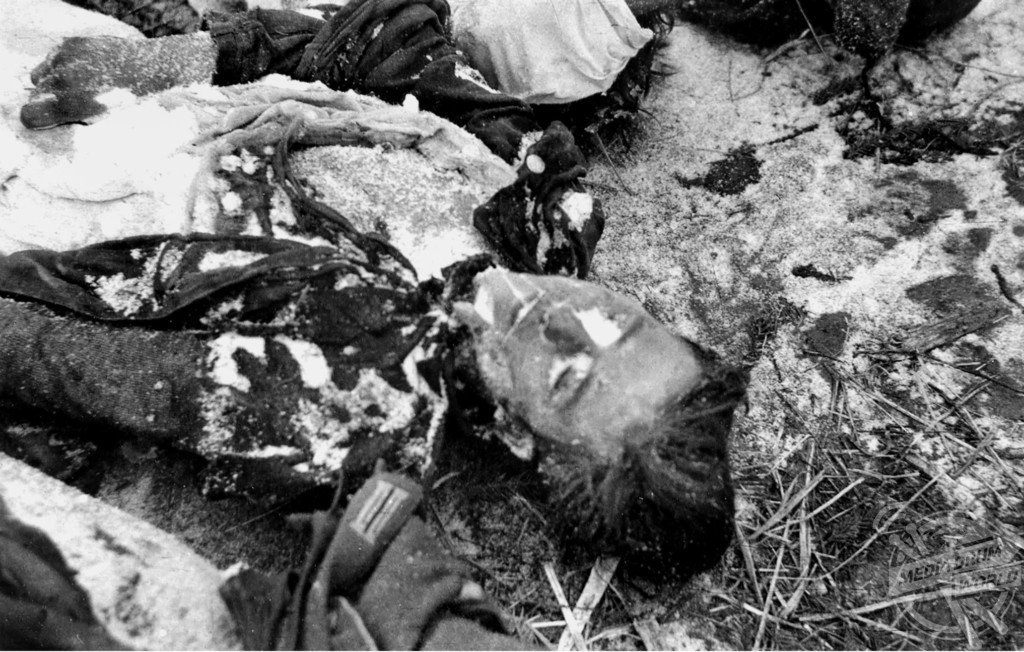
“The Battle of the Bulge was characterised by heavy snow that swathed the ground, impeding progress on both sides,” explained Tucker-Jones.
“The photos of the battle show just how bad the conditions became.
“Just four days after the German attack commenced the temperature plummeted and snow set in, making the battlefield more reminiscent of Stalingrad than the Western Front.
“The Ardennes proved to be no winter wonderland but a place of savagery and sudden death.”
After taking sizeable beatings on both their Eastern and Western Front – including the significant D-Day Landings – the Nazis launched a massive counterattack on 16 December 1944, targeting allied forces in the area around the Ardennes forest in Belgium and Luxembourg.
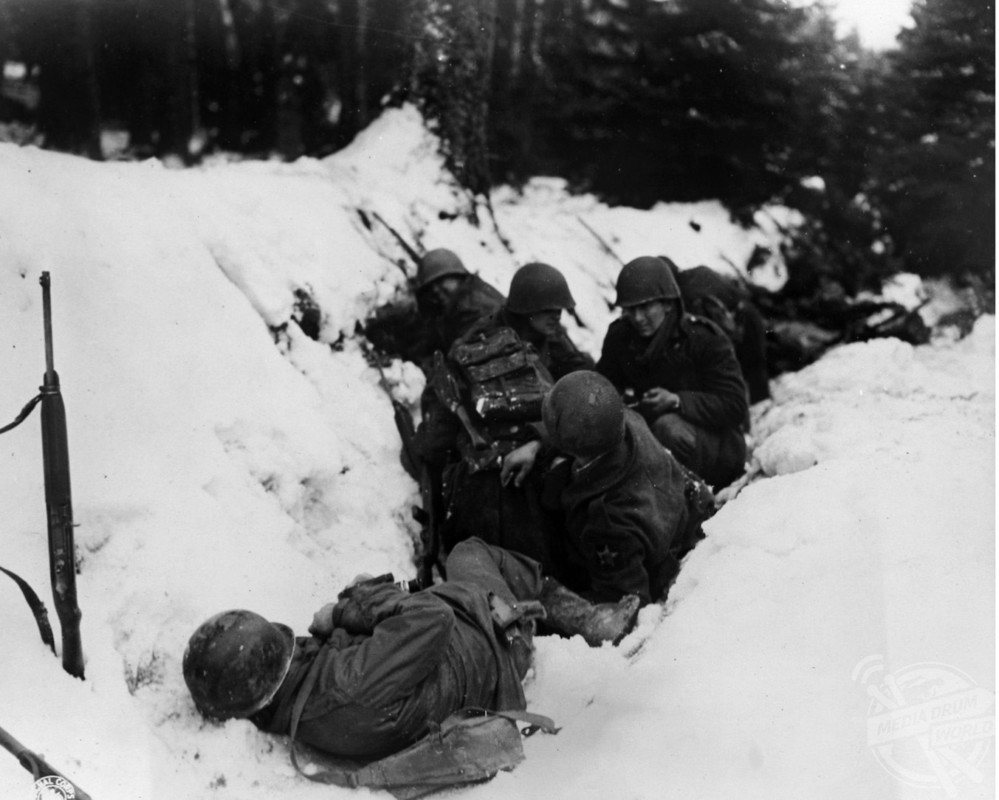
Allied forces in the Ardennes consisted primarily of American troops, who were not as accustomed as the Germans to fight in the savage winter months, who were initially pushed back by the speed and sheer firepower of the Nazi assault.
The Germans outnumbered allied forces by approximately three to one.
The heavily armoured units pushed westwards through the middle of the American line, creating the ‘bulge’ that gave the battle its name.
However, their success was short-lived.
The rapid arrival of Allied reinforcements and the Americans’ inspirational defence of Bastogne and St Vith slowed the German war machine.
The Nazi offensive also required men and resources that Germany had simply ran out of after years of grinding war.
Fuel shortages were made worse by bad weather, which disrupted German supply lines.
The weather, which had previously restricted Allied air support, eventually cleared and air attacks resumed.
By the end of December, the German advance had ground to a halt and just four weeks later, the allied forces had reclaimed all of their lost land.
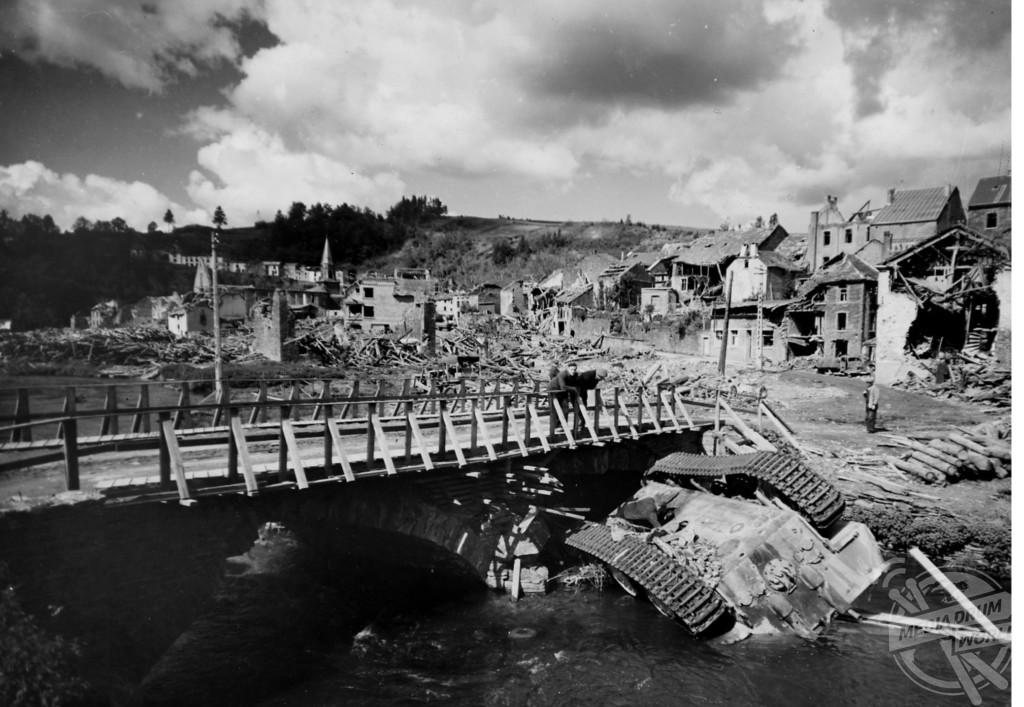
It came at a tragic cost though, with US forces suffering 75,000 casualties including as many as 20,000 dead.
Unfortunately, one more grotesque surprise awaited the Americans.
After the Nazis were driven back, US troops discovered that the vanquished Ist SS Panzer Division had been responsible for the massacre of 362 American prisoners and 111 Belgian civilians in the Malmedy area, Belgium.
Unarmed and defenceless, the Americans and Belgians were lined up in the icy fields and callously machine-gunned down.
Those who pretended to be dead were rooted out and shot at close range.
A café where terrified soldiers and civilians attempted to hide had its doors locked before being burnt down.
The Nazi officials responsible were tried for war crimes in 1946, with numerous death sentences handed out.
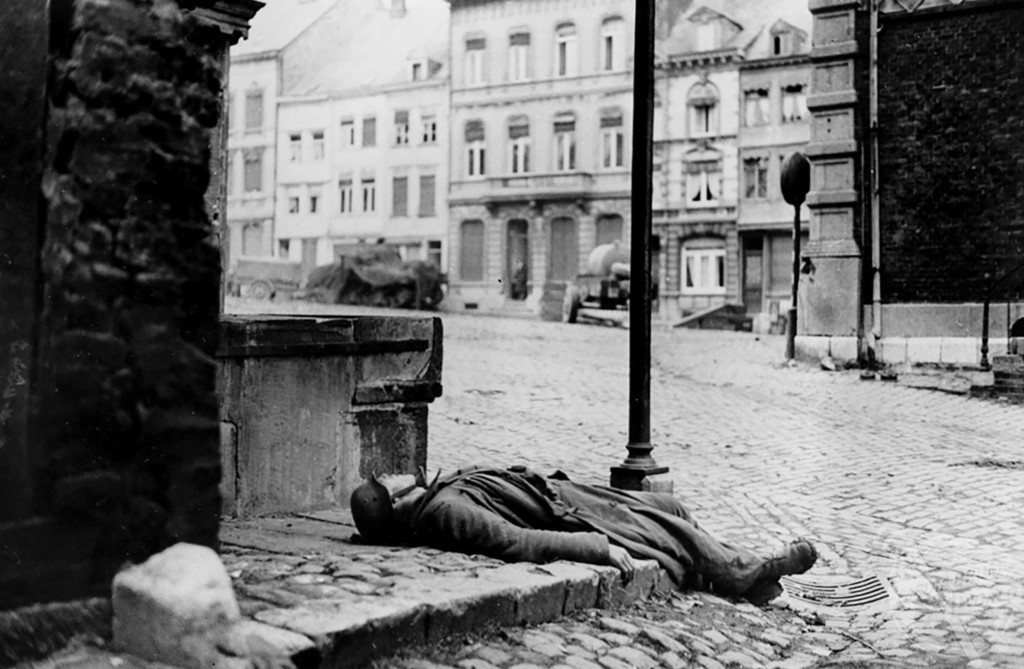
Ultimately, the bold but ill-fated counterattack by Hitler and his war cabinet was fundamental to the eventual collapse of the Third Reich with allied forces pushing their way into German heartlands by Spring 1945.
Despite the eventual victory, and notwithstanding the courage of the Allied soldiers, historian Tucker-Jones suggests there was only one real victor in the Battle of the Bulge, the bitter weather.
“Only in the mountains of Italy and Tunisia had the Allies encountered such conditions before,” he continued.
“The Red Army, having already fought through three Russian winters, was well acclimatised, but for the British and Americans the snows came as a shock.
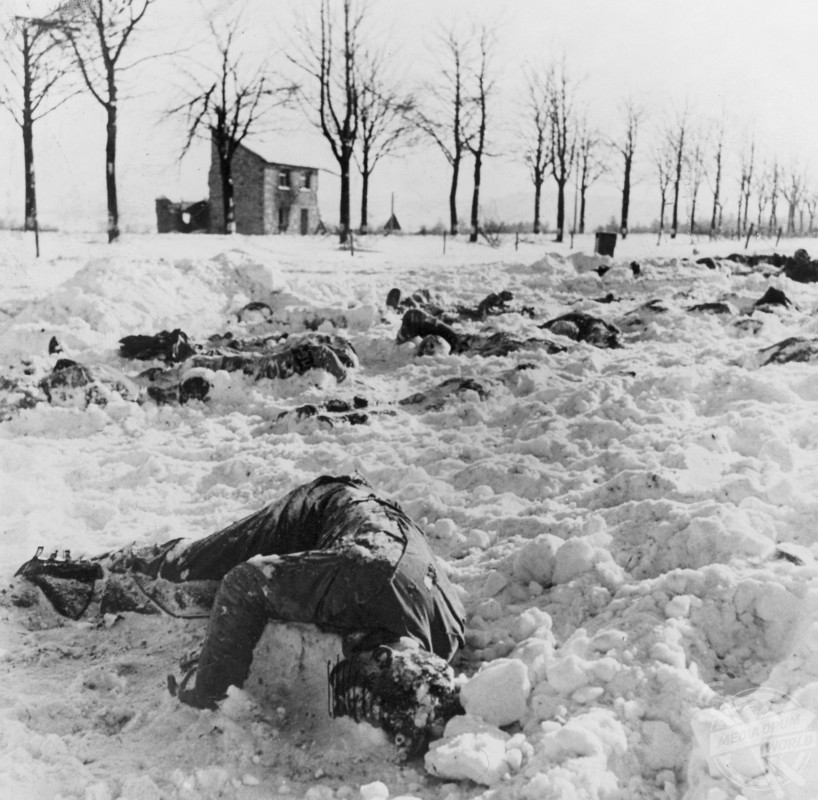
362 American prisoners and 111 Belgian civilians in the Malme´dy area. Mediadrumimages/AnthonyTucker-Jones/PenandSword
“Summoning the strength to fight in the snow despite being cold and hungry was no easy feat.
“The Germans for their part marred what was a highly audacious operation by committing a series of repugnant war crimes against both the American GIs and Belgian civilians.
“Not only did they leave a swathe of death and destruction across the Bulge, but also a trail of wanton murder.”
Anthony Tucker-Jones’ Armoured Warfare in the Battle of the Bulge, published by Pen and Sword Books, is available here.






